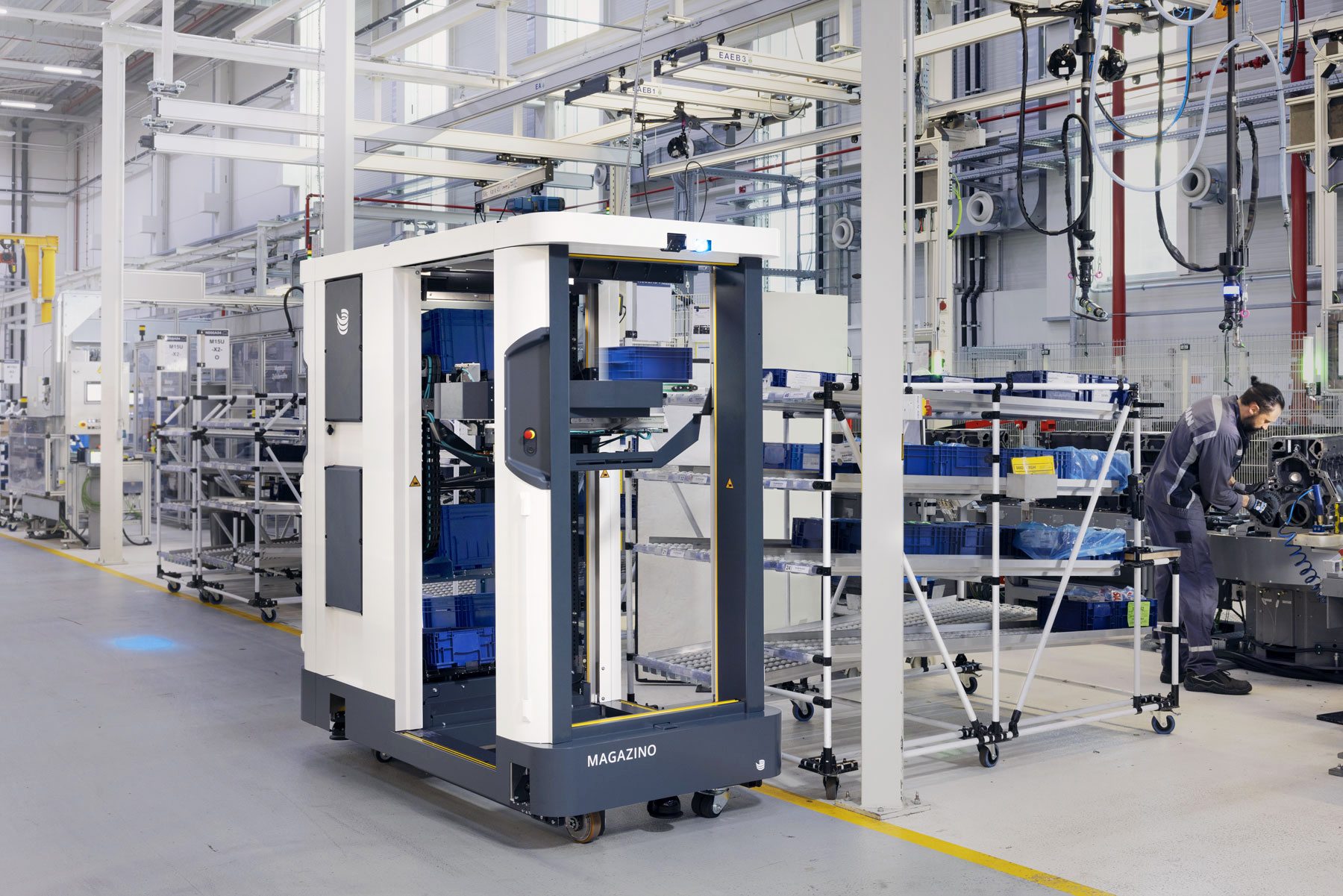To master the growing complexity of internal material flows for combine harvesters, forage harvesters and other agricultural machinery, CLAAS has upgraded to the latest version of its intelligent transport control system.
It is the dream of many children growing up in the countryside to one day harvest crops from the field with a combine harvester and gain first-hand experience of the power of these huge agricultural machines. “The enthusiasm for our technology has naturally brought many employees to CLAAS. It’s fun to see our own products at work in the field,” reflects Andreas Lonnemann, project engineer for production logistics at CLAAS. Responsible for in-house transport logistics, Lonnemann accompanied the upgrade project of the ‘SYNCROTESS’ transport control system from the Aachen-based optimization specialist INFORM.
Efficient Material Flow
CLAAS manufactures combine harvesters, self-propelled forage harvesters, and system tractors at its main factory in Harsewinkel, Germany. To date, the company has sold more than 400,000 combine harvesters. For the assembly of the machines, an average of 8,200 internal transports takes place daily. These bring the necessary material, prefabricated components or auxiliary materials to the right place in the assembly hall. This internal material flow, which is carried out by forklifts, tractors and tugger trains, has been controlled and optimized by the add-on system since 2006.

“Placing transport orders with slips of paper, as was once the case, is no longer conceivable with this volume of orders,” explains Lonnemann. “We are already two steps ahead and for efficient production logistics, what we need most is optimization powered by intelligent algorithms such as those provided by SYNCROTESS.” The transport control system centrally manages and optimizes all in-plant logistics processes using mathematical optimization models. From a bird’s-eye view, the system analyses all transport orders issued by the ERP system or entered manually and, factoring in numerous constraints and parameters, calculates time- and route-optimized paths. The result: fewer empty runs, on-time deliveries to the assembly line, and maximized use of available resources.
Higher Demand, Less Time
In 2020 CLAAS upgraded the system to the latest version as part of a site-specific modernization project. The expanded functions favour the handling of increasing complexity: the merging of two production lines into one central, optimized, and digitalized line increased the volume of internal transports, notes Lonnemann. “We now need more precise delivery, often with smaller material amounts.” In addition, agricultural machinery is becoming larger, more complex and more customized, increasing the range of parts. However, certain transports must not take longer than 20 minutes, especially for assemblies or commissioned goods that are needed per machine in a correct sequence within the cycle time of the assembly line.
To further increase flexibility, CLAAS is also advancing the shift from forklifts to tugger trains. “When materials are placed on rollers, we can operate more quickly and simultaneously reduce the risk of accidents within the plant,” adds Lonnemann. However, planning tugger train routes comes with specific challenges, as loading doors can be positioned flexibly on either the left or right side of the vehicle. “From an efficiency standpoint, incorrect loading can be disastrous. Turning a tugger train is time-consuming or even impossible in one-way systems on factory grounds,” says Matthias Wurst, Head of Business Development Industrial Logistics at INFORM. “To address this, we developed a dedicated logic in SYNCROTESS that optimizes tugger train transports by factoring in such constraints.”

This transition also supports CLAAS in achieving its sustainability goals within production logistics, such as reducing traffic and avoiding trips by diesel-powered forklifts in the production areas. For better air quality at the workplace and less noise pollution, most of the vehicle fleet has already been converted to electric drive. The transport control system only guides the remaining diesel-powered transports outside the plants.
Response to Disruptions
Illness and delivery shortages are part of everyday business and cannot be prevented by any artificial intelligence. But with SYNCROTESS, CLAAS can now react much better to delays in internal transport, says Lonnemann. “Dispatching can manually assign individual transports a higher priority in the event of shortages. The system’s optimization algorithms then automatically schedule the order on the nearest resource so that delivery is made as quickly as possible.” Running the software in the cloud also offers key advantages in the event of staff substitutions, holidays, or remote work scenarios. Users can log in from anywhere via the internet and immediately get a real-time overview of the current order situation in a modern interface. This makes transfers effortless and reduces the potential for errors.
“The cooperation with INFORM has always been very good,” Lonnemann sums up. “During the go-live, our contact person was always at our side and actively supported us on site during the critical phase.” This meant that not only was the timetable maintained, but technical irregularities were also quickly solved. Following just a few days of initial training on the new software and hardware, the 45 employees in the internal transport department were able to resume smooth operations.



